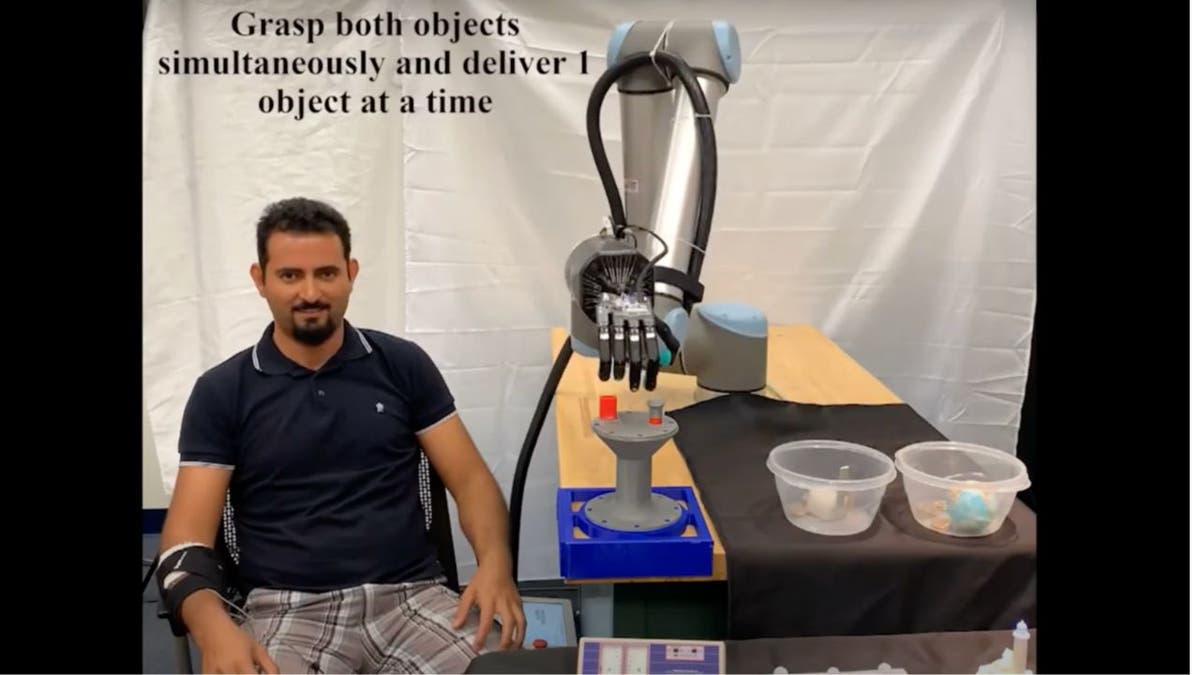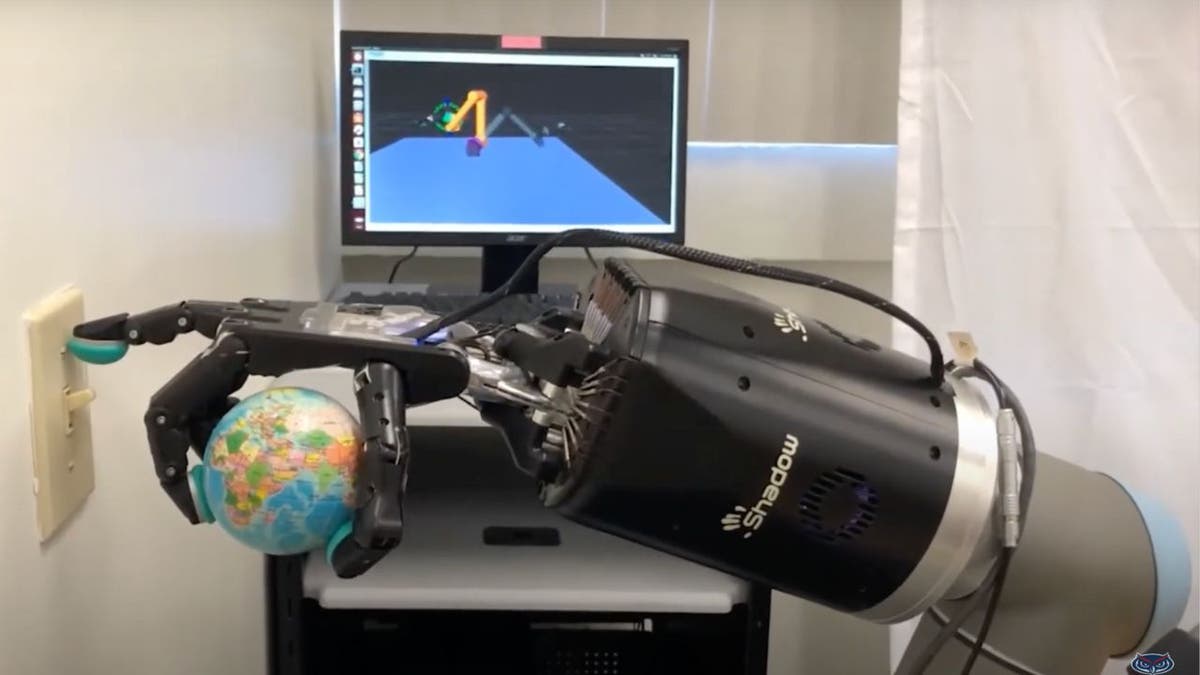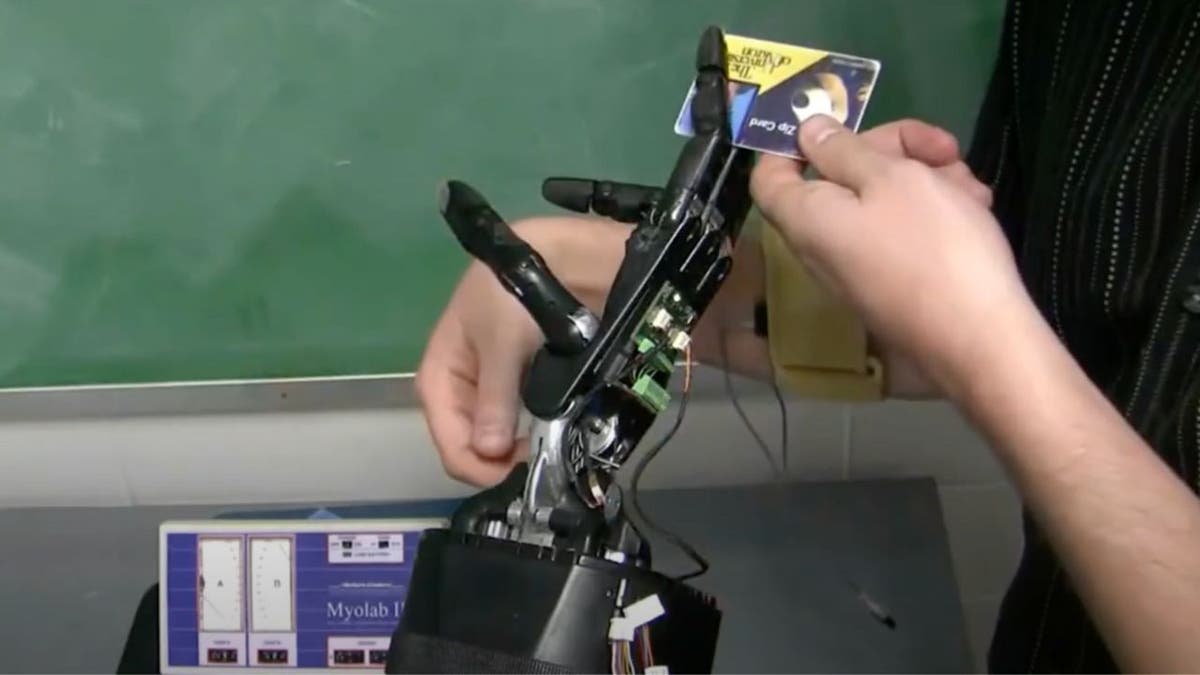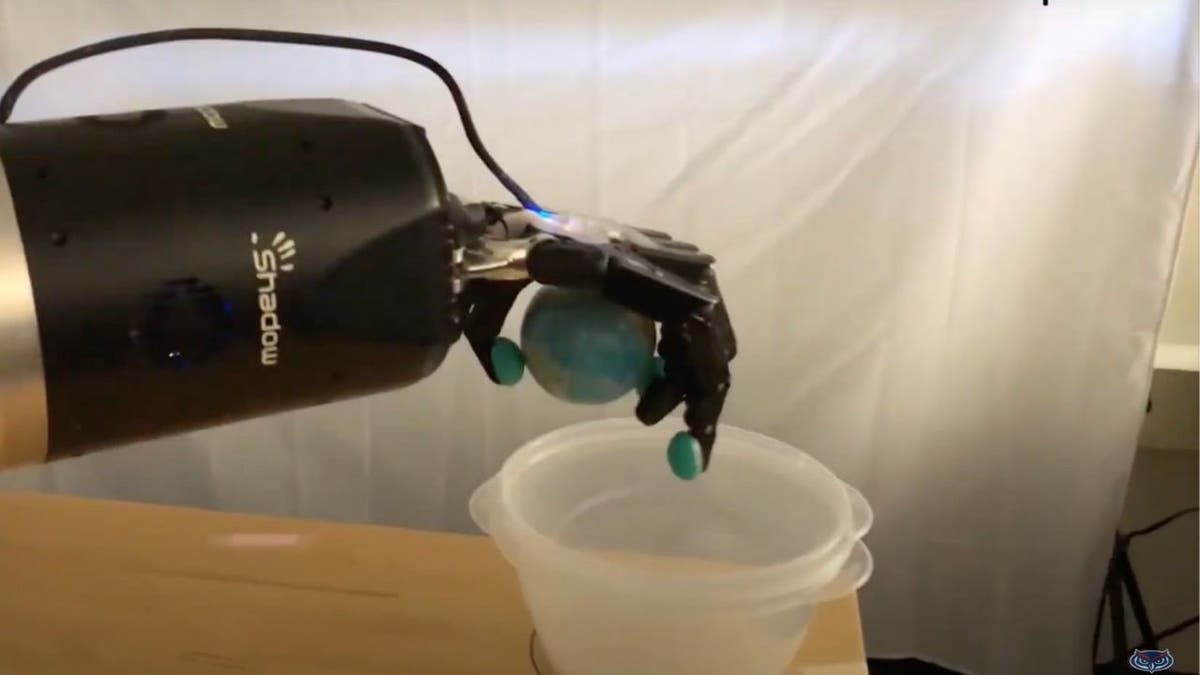Individuals who use prosthetic hands often face limitations in performing everyday tasks due to the restricted functionality of current prosthetics. A recent study from Florida Atlantic University (FAU) presents a significant leap forward in prosthetic technology, potentially transforming the lives of prosthetic users.

Image: Man wearing the soft robotic armband (Florida Atlantic University)
Simultaneous Object Manipulation Achieved
Researchers at FAU's College of Engineering and Computer Science, collaborating with the Charles E. Schmidt College of Science, have developed a system that combines haptic feedback, electromyogram control, and a wearable soft robotic armband. This innovative approach allows users to control the grip force applied to two distinct objects concurrently using a dexterous artificial hand. The study's results, published in Scientific Reports, reveal that participants successfully grasped and moved two objects simultaneously without dropping them, even when their vision was blocked. This accomplishment was made possible through multiple channels of haptic feedback. For instance, participants could hold a card while simultaneously opening a water bottle or flipping a light switch.

Image: Prosthetic robot hand (Florida Atlantic University)
The Role of the Multichannel Soft Robotic Armband
Central to this breakthrough is a multichannel soft robotic armband that delivers artificial tactile sensations. This armband incorporates soft actuators, providing proportional contact force feedback, and vibrotactile stimulators that warn users of potential drops or object damage. Strategically placed at points corresponding to the thumb, index, and little fingers, the armband's haptic feedback significantly enhances simultaneous object control. Study participants emphasized the crucial role of haptic feedback, highlighting its importance over visual feedback, particularly in situations where visual cues were insufficient to prevent dropping an object.

Image: Prosthetic robot hand (Florida Atlantic University)
Reshaping the Future of Prosthetics
This study's findings hold profound implications for the future of prosthetic hand control. By enabling precise dexterous control through enhanced sensory feedback, this research opens doors for individuals with upper limb loss to perform complex tasks previously beyond the reach of existing prosthetics. Imagine playing a musical instrument or conducting intricate surgical procedures—activities that could become a reality with this advanced technology. Furthermore, the researchers observed that participants with limb loss matched the performance of able-bodied individuals in key metrics during the tasks, a highly encouraging result for clinical applications and a testament to technology's potential to bridge functional gaps for users.

Image: Prosthetic robot hand (Florida Atlantic University)
As this technology evolves, we can anticipate prosthetic hands that not only replicate but surpass the capabilities of natural hands, granting users greater independence and the ability to fully participate in daily life and specialized tasks. This innovation addresses current limitations and sets the stage for further advancements in assistive technologies for people with disabilities.
Comments(0)
Top Comments